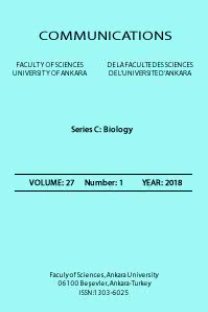HISTORY OF MELISSOPALYNOLOGICAL METHODS
Melissopalynology, history, honey, methods, pollen analysis
___
[1] W.V. Der Ohe, L.P. Oddo, M.L. Piana, M. Morlot, P.Martin, Harmonized methods of melissopalynology. Apidologie, 35, (2004) 18-25.[2] M.A. Abeshu, B.Geleta, Medicinal Uses of Honey, Biology and Medicine, 8(2), (2016) 1-7.
[3] http://www.izsum.it/Melissopalynology/melisso.htm.
[4] R. Galarini, M.R. D’Albore, Mediterranean Melissoplaynology. Ed: Roberto galarini and Matteo Riciardelli D’Albore (2001).
[5] R.Pfister, Versuch einer Mikroskopie des Honigs. Foschungsber. – Lebensmitt. Bez. Hyg. Chem. Pharm. (Munchen), 2 ( 29), (1895).
[6] C. Fehlmann, Beiträge zur mikroskopischen Untersuchung des Honigs. Mitt. Schweitz. Gesundheitsamtes, 2, (1911) 179-221.
[7] L. Armbruster, G. Oenike, Die Pollenformen als Mittel zur Honigherkunftsbestimmung.Wachholz.Nemünster, (1929).
[8] L. Armbruster, J. Jacobs, Pollenformen und Honigkerkunfbestimmung. Arch.J.Bienek. (1934-1935) 15(8): 277-308; 16 (1.2B):17-106.[9]. C. Griebel, Zur Pollenanalyse des Honigs.Z.f.Unters.der Lebensmittel, 61 (3), (1931) 241- 306.
[9] E. Zande, Beiträge zur Herkunftsbestimmung bei Honig. I-IV. I: Reichsfachgruppe Imker. Berlin; II, III, V: Liedloff, Loth & Michaelis, Leipzig; IV; Ehrenwirth, München. (1935, 1937, 1941, 1949, 1951).
[10] J. Louveaux, A. Maurizio, G. Vorwhol, Methods of melissoplaynology, International Bee Research Association. Bee World, 59 (4), (1978) 139-157.
- ISSN: 1303-6025
- Yayın Aralığı: Yılda 2 Sayı
- Başlangıç: 1943
- Yayıncı: Ankara Üniversitesi
URBAN LANDSCAPE AND POLLEN ALLERGY
AN INVESTIGATION OF POLLEN GRAIN THERMAL DIVERSITY ON SPECIES LEVEL
Muhammad MUJTABA, Murat KAYA, Talip CETER
COMPARATIVE POLLEN MORPHOLOGY STUDIES OF TWO ENDEMIC NOCCAEA MOENCH (BRASSICACEAE) TAXA FROM TURKEY
Kurtuluş OZGISI, Onur KOYUNCU, Okan SEZER, Derviş OZTURK, Atila OCAK, O.koray YAYLACI, İsmühan POTOĞLU ERKARA
CHEMICAL COMPOSITION AND ANTIOXIDANT ACTIVITY OF SEVEN DIFFERENT GRAPE EXTRACTS
Laila Radwan Abdalla ELFOGOHI, Haafize Dilek TEPE, İdris YAZGAN, Talip CETER
THE ALLERGENIC POLLEN IN THE ATMOSPHERE OF EL-HADJAR CITY (ANNABA, ALGERIA)
BEE POLLEN AND ITS PHARMACOLOGICAL PROPERTIES
POLLEN FLORA OF KASTAMONU UNIVERSITY CAMPUS I: BRASSICACEAE
Mohamed Nuri ELTAJOURI, Talip CETER, Barış BANI
CHANGES OF ARTEMISIA POLLEN CONCENTRATION IN ZONGULDAK ATMOSPHERE
Şenol ALAN, Tuğba SARIŞAHİN, Ayşe KAPLAN
ALLERGENIC COMPOUNDS IN HONEY BEE PRODUCTS
SPORE MORPHOLOGY OF SOME WEISSIA SPECIES (POTTIACEAE) FROM TURKEY
